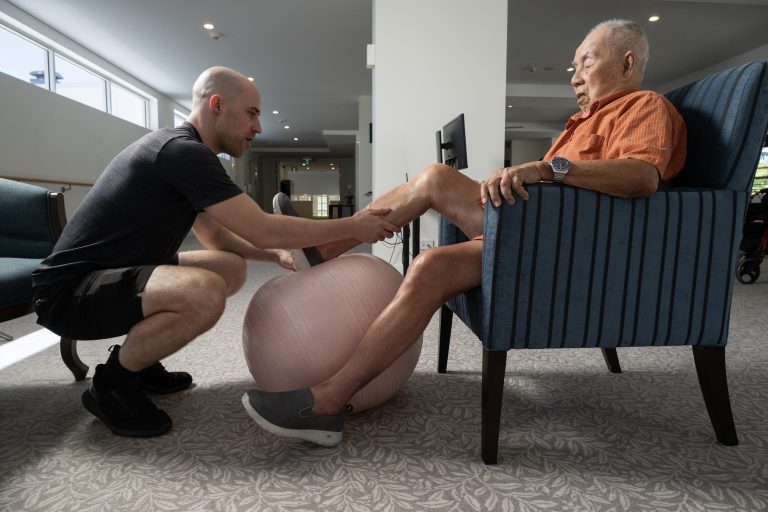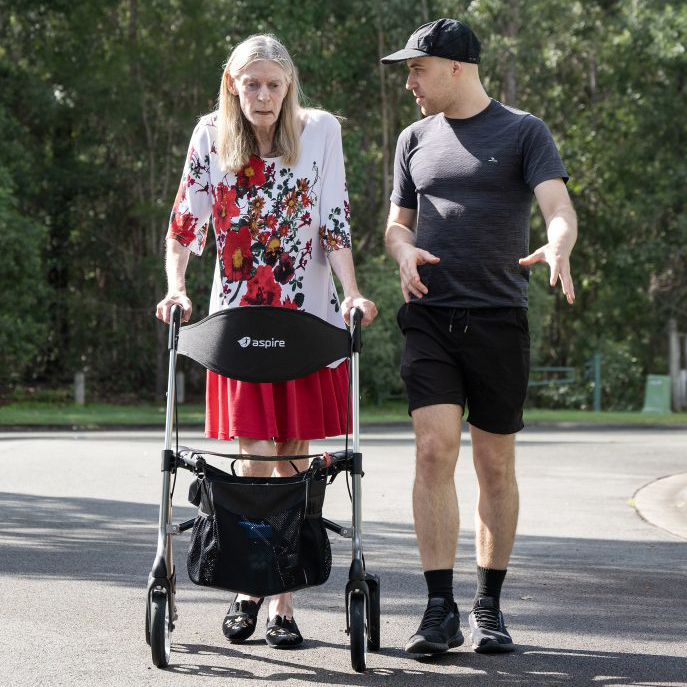Hip fractures refer to breaks at the top of the thigh bone (femur). They are serious injuries that can significantly impact your mobility and independence and, if not treated properly, can have long term physical impacts. Approximately 20,000 hip fractures occur in Australia every year and while they can happen to anyone, they are more common in people aged over 65.
If you suffer a hip fracture, proper treatment and recovery is crucial in order to fully heal and not suffer ongoing complications.
With multiple types of fractures and a multi-step process for diagnosis and recovery, it’s important to understand what to expect so you manage the injury properly. Here, we’ll go through the risks, treatment and prevention information that will help you understand what’s involved, manage the injury properly, and hopefully avoid it all together.
How Do Hip Fractures Happen and Who is Most at Risk?
The most common cause of hip fractures are falls. In fact, up to 90% of hip fractures are results of a fall. Those who are over 65 years old are more at risk, due to higher likelihood of reduced mobility or balance and decreased bone density, which makes bones more prone to breakage.
Women aged over 65 are at a further increased risk, making up around 70% of cases. This is largely due to higher prevalence of osteoporosis in women, which progressively reduces the quality and density of bones and can eventually lead to fractures from even minor bumps or falls.
What are the symptoms?
Like any broken bone, hip fractures hurt – a lot. If there has been a fall or accident that results in severe pain in the hip or groin area, it’s best to assume there could be a fracture or break. Other symptoms can include:
- Radiating pain
- Inability to bear weight
- Swelling and bruising
- Limited mobility
- Stiffness
If a hip fracture is suspected, it’s important to seek a medical evaluation as quickly as possible to minimise any risk of worsening the injury. Evaluation will generally include a physical examination and an x-ray to confirm the presence and type of fracture. Occasionally other testing like MRI, CT scans or bone scans are also required.
Treatment and Recovery
Nearly all hip fractures require surgery. The type of surgery will depend on the nature and severity of the fracture and could either be:
- Internal fixation (inserting screws, plates or rods to stabilise the hip bone)
- Partial hip replacement
- Full hip replacement
These are significant surgeries that require ongoing recovery and rehabilitation. Post-surgery, patients need to see a physio for rehabilitation, who will help them to regain mobility and strength in their hip and leg. Because movement and mobility will still be restricted after surgery, a mobile physiotherapist can often be helpful as they are able to come to you.
Physiotherapy plays a big part in hip fracture recovery, and is key to regaining strength and movement in the hip, as well as getting back to walking and moving properly. It can also help build overall strength and agility to reduce the chances of more fractures or repeated falls in the future.
How to Prevent Hip Fractures and Lower Your Risks
While you can never fully protect yourself from hip fractures (after all, accidents happen), there are a few preventative things you can do to help lower your risks.
Diet
While bone strength and density naturally deteriorates as we age, ensuring adequate intake of calcium and Vitamin D can help maintain strong bones and delay or minimise density loss.
Exercise
Regular weight bearing and resistance exercises can help strengthen muscles and bones, as well as improve mobility and balance. This not only reduces the chance of fractures, but works to prevent falls that can lead to them.
Monitoring
If you are at risk of fractures, falls or conditions like osteoporosis, it can be beneficial to regularly test and monitor your bone density to understand your risks and take any preventative actions if tests show a decrease in bone density.
Preventative Physio
While physiotherapy is an important part of recovery, it can also play a role in hip fracture prevention. Regular physio can provide guidance and exercises to strengthen the hips and legs. Specialist services like osteopath therapy can also help with factors like balance.
Stay Healthy and Promote Recovery With GM Physiotherapy
Hip fractures can be scary and take considerable time to recover, interrupting your daily life. However, it doesn’t have to spell the end of independence of mobility. With the right response and treatment, you can speed up recovery and return to your normal level of movement and mobility, improving longevity and reducing risks of re-injuring.
This is where physiotherapy is so important. Engaging the right physiotherapist after a hip fracture will determine the speed and success of your recovery. Engaging one as you age but before you suffer any kind of injury can help you prevent the risk of falls and broken bones.
At GM Physiotherapy, our physios use the latest research and years of experience to personalise care to your unique situation and goals. We offer specialised senior physiotherapy services that cover hip fracture management, prevention and recovery and our core focus is on your health and independence.
For more information on how to manage a hip fracture and our physio rehabilitation services, please reach out to our friendly team.





 Back to all posts
Back to all posts

